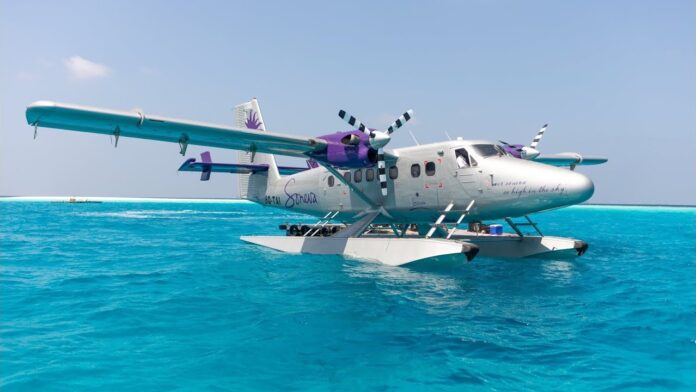SpiceJet will launch India’s first seaplane service later this month, after years of interest. The airline is targeting traffic to tourist destinations with the new service. Flights could begin Oct. 31 if SpiceJet can receive the necessary environmental and government approvals.
Long-standing interest
This isn’t the first time SpiceJet has considered seaplane flights to connect cities across waterbodies. In late 2017, the low-cost carrier tested routes in Mumbai and other parts of India, signalling the start of possible services.
According to the Economic Times, SpiceJet Chairman Ajay Singh said the airline planned to start service in late 2018 and could order up to 100 jets to cope with growing demand. However, the timeline came and went with little news about a potential order or new routes.
During testing, SpiceJet operated the Quest Kodiak G1000 seaplane. The plane has capacity for 10 passengers and lands both on land and at sea. Quest was originally owned by the Japanese firm Setouchi Holding, but has since been sold to French aerospace giant Daher.
New service in Gujrat
According to Firstpost, SpiceJet’s first route will be from Ahmedabad to Kevadia, both located in Gujrat state. Ahmedabad is the seventh busiest airport in India and Kevadia is home to the “Statue of Unity” of former Deputy Prime Minister Sardar Vallabhai Patel, the largest statue in the world.
A new terminal will be built in Kevadia, which is 200 kilometers from Ahmedabad. The addition of seaplane service can significantly reduce the current four-hour travel time. The flights will operate eight times a day, four times in either direction, allowing passengers to take short day trips as well.
It is currently unclear which aircraft SpiceJet will use on that route. According to Firstpost, the airline is in talks with a French firm for a 19-seat plane. This could point to Daher, the company that now owns the Quest seaplane program.
There are still obstacles
One of the main reasons why seaplane services do not exist in India is due to environmental concerns. Although not explicitly listed in the 2006 Environmental Impact Assessment, aquatic airports are also considered to negatively affect the environment.
The Indian government had not yet applied for environmental clearance for the aquatic airports in January, despite having submitted the airport plans, according to The Hindu. It will be seen if SpiceJet will receive permission for such flights, three years after it first tried.
SpiceJet’s plans to expand into the seaplane market are part of an aggressive expansion in recent months. The airline has started long-haul passenger and cargo flights, with flights to London starting in December. All of this comes despite a tough financial situation and a severe recession in the industry.
Why Are Scientists Trying To Grow Asafoetida(Heeng) In The Himalayas?
Bengaluru Violence Was Preplanned, Says Chargesheet










































